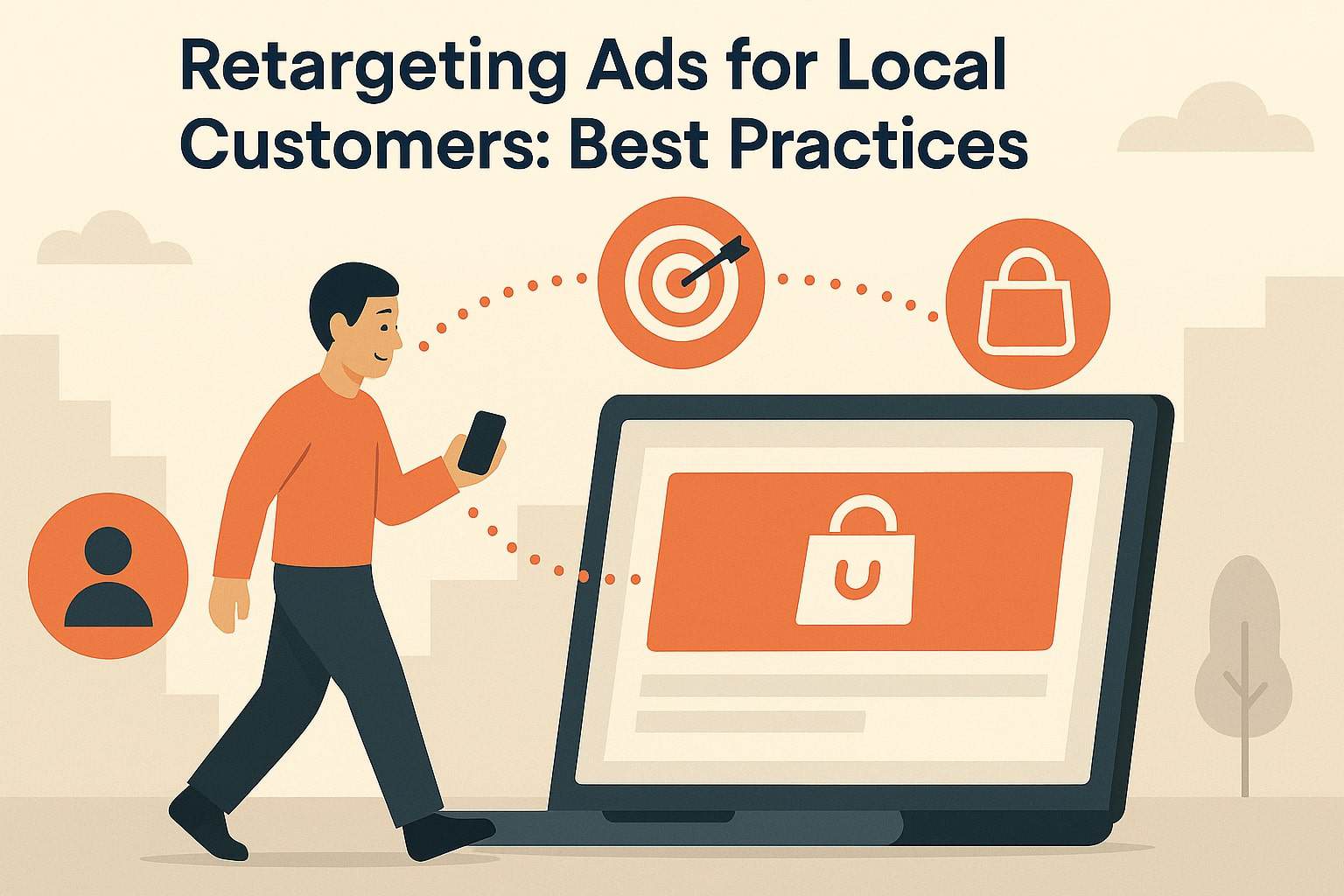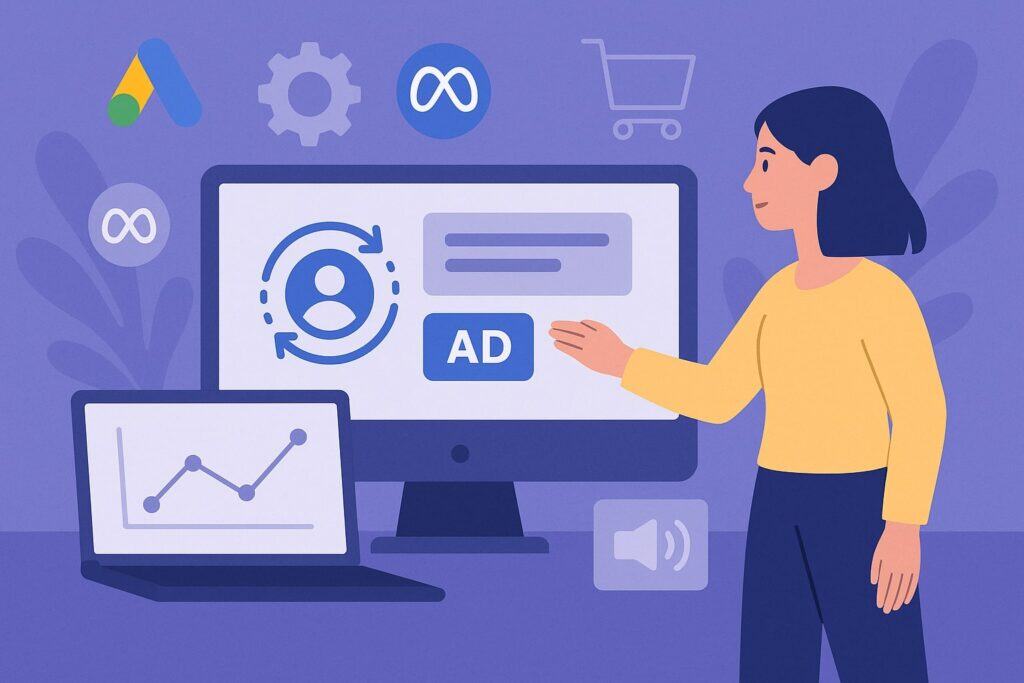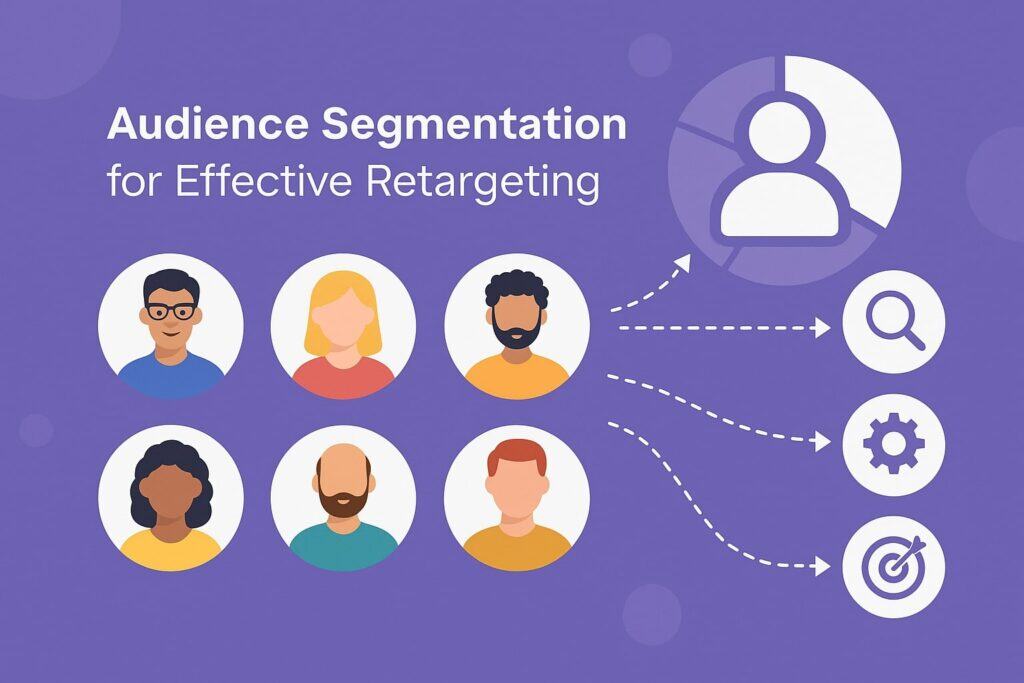
Retargeting Ads for Local Customers: Best Practices
Digital marketing is constantly evolving, but one strategy has proven itself to be both powerful and adaptable: retargeting ads. For local businesses, retargeting represents a vital way to stay top-of-mind with potential customers who have already shown interest in products or services.
Unlike cold advertising, where businesses reach out to entirely new audiences, retargeting allows businesses to re-engage with warm leads—those who visited their website, interacted with their social media, or engaged in some form of brand touchpoint but didn’t complete a purchase.
For local businesses, the stakes are even higher. With limited budgets and the need to maximize every dollar spent on advertising, retargeting can serve as a cost-effective method to drive foot traffic, boost conversions, and build brand loyalty within the community.
In this comprehensive guide, we will break down retargeting ad best practices for local customers, explore implementation strategies, discuss audience segmentation, and provide actionable insights to help small and medium-sized businesses thrive.
Understanding Retargeting and Why It Matters for Local Businesses

Retargeting, sometimes referred to as remarketing, is the practice of showing ads to people who have already engaged with your business in some way. These engagements can include visiting your website, adding items to a cart, checking store hours, or even just clicking on a social media ad.
For local businesses, retargeting is especially valuable because:
- Audience Familiarity – Local customers are more likely to recognize and trust a nearby brand, especially if they’ve already interacted with it once.
- Cost Efficiency – Retargeting ads typically have lower cost-per-click (CPC) and higher return on ad spend (ROAS) compared to prospecting campaigns.
- Geographic Focus – Local businesses can combine geo-targeting with retargeting to ensure that ads are only shown to nearby users, minimizing wasted impressions.
- Consumer Behavior – Today’s customers rarely purchase on the first interaction. Retargeting bridges the gap between awareness and conversion.
Imagine a local restaurant whose menu page receives hundreds of visits every week, but only a fraction of those visitors make a reservation.
With retargeting, that restaurant can show ads to visitors featuring mouth-watering images of their dishes, limited-time offers, or reminders to book a table. This keeps the restaurant top-of-mind and increases the likelihood of customers returning to make a purchase decision.
For service providers—such as dentists, salons, gyms, or repair shops—retargeting can also encourage people who explored pricing or services online to finally book an appointment. The idea is to nurture interest into action by providing gentle reminders and relevant incentives.
In essence, retargeting is not about blasting ads to random people—it’s about reaching the right people, at the right time, with the right message.
Setting Up Retargeting AD Campaigns: Tools and Platforms

Before diving into strategies, businesses must understand how to set up retargeting ads. Several platforms make this possible, and each has unique strengths for local businesses.
1. Google Ads Retargeting
Google Display Network allows businesses to retarget website visitors across millions of websites and apps. For local businesses, it’s particularly useful for brand awareness because users are reminded of the brand even while browsing non-related websites.
- Local Use Case: A yoga studio can target past website visitors with a Google Display ad showing “First Class Free – Limited Time” banners.
- Best Practices: Use geographic targeting to ensure ads only appear in your city or service area.
2. Facebook and Instagram Retargeting
Meta platforms are the most popular for retargeting local customers, especially since many small businesses already use Facebook Pages and Instagram profiles to engage their community.
- Local Use Case: A local café can retarget customers who interacted with its Instagram posts by offering a “10% Off Latte Happy Hour” ad.
- Best Practices: Create engaging ad creatives with local visuals, community events, or familiar landmarks to build relatability.
3. TikTok Retargeting
With its rapid growth, TikTok offers an opportunity for creative short-form video ads. Retargeting works well here for businesses targeting younger audiences.
- Local Use Case: A boutique clothing shop can retarget viewers who liked their TikTok fashion haul video with a “New Arrivals In-Store Now” ad.
4. Email and SMS Retargeting
Retargeting isn’t limited to display ads. Email marketing and SMS campaigns allow businesses to re-engage people who signed up for newsletters or loyalty programs.
- Local Use Case: A local gym can send automated SMS offers to trial members who haven’t signed up for full memberships yet.
By choosing the right platform—or a combination of them—local businesses can maximize the effectiveness of retargeting campaigns.
Audience Segmentation for Effective Retargeting

One of the biggest mistakes local businesses make is treating all potential customers the same. Segmentation ensures that retargeting campaigns remain relevant and personalized.
Key Segments for Local Retargeting
- Website Visitors – People who browsed your website but did not take any action. For example, someone checking your menu or service page but not booking.
- Cart Abandoners – E-commerce businesses and restaurants with online ordering can target customers who added items to a cart but didn’t check out.
- Past Customers – Retarget previous customers to encourage repeat visits with loyalty offers.
- Event Attendees – If you hosted a local event or workshop, retarget attendees with future event promotions.
- Engaged Social Followers – Retarget people who engaged with your posts but haven’t yet purchased.
Segmentation Example
Let’s say you own a local spa. You might create different retargeting campaigns like:
- Visitors who looked at “Massage Services” → Retarget with a discount on a massage session.
- Past customers who booked facials → Retarget with “Exclusive Membership Package for Returning Clients.”
- Social media users who watched videos → Retarget with “Virtual Tour of Our Spa – Book Now.”
By breaking audiences down into smaller, behavior-based groups, retargeting becomes more effective and feels less like spam.
Crafting Retargeting Ad Creatives That Convert
The success of retargeting campaigns lies not just in targeting but also in the quality of ad creatives. For local customers, ad creatives must combine personalization, relevance, and urgency.
Best Practices for Ad Creatives
- Use Local Imagery – Ads that feature recognizable landmarks or community-specific visuals resonate more with local audiences.
- Highlight Special Offers – Limited-time deals, discounts, or loyalty rewards encourage quick action.
- Incorporate Social Proof – Use reviews or testimonials from local customers. “Loved by over 500 locals in [Your City]” can go a long way.
- Strong Call-to-Actions (CTAs) – Instead of generic CTAs like “Click Here,” use specific ones like “Reserve Your Table Today” or “Get Your Free Consultation.”
- Mobile Optimization – Most retargeting ads will be viewed on mobile devices, so ensure ad creatives are optimized for small screens.
For example, a local pet grooming salon could run a retargeting ad with a short video showing happy pets before and after grooming, paired with a “Book Your Spot – Limited Appointments This Week” CTA.
Creatives must be refreshed regularly to avoid ad fatigue. Customers who see the same ad repeatedly may start ignoring it, so rotating visuals and copy every few weeks keeps engagement high.
Frequency Capping and Avoiding Overexposure
One of the most common mistakes in retargeting is overexposing customers to ads. While retargeting works best with multiple touchpoints, showing the same ad too many times can lead to annoyance.
- Best Practice: Implement frequency capping, which limits the number of times a customer sees your ad in a given time frame.
- Example: Cap your retargeting campaign to show ads no more than 3 times per day and 10 times per week.
Overexposure not only wastes budget but can also damage brand perception. The goal is to stay present without becoming intrusive.
Measuring Retargeting Success
Like any marketing effort, retargeting requires constant monitoring and optimization.
Key Metrics to Track
- Click-Through Rate (CTR) – Measures how engaging your ad is.
- Conversion Rate (CVR) – The percentage of users who take the desired action.
- Return on Ad Spend (ROAS) – Determines overall campaign profitability.
- Cost Per Conversion (CPC/CPA) – Helps you understand if campaigns are financially sustainable.
- Engagement Metrics – Such as time on site or repeat visits, which indicate nurturing effectiveness.
Local businesses should compare results against offline outcomes as well. For instance, if a restaurant notices a spike in reservations after launching retargeting ads, that’s a strong success indicator—even if the online booking data doesn’t capture all conversions.
FAQ’s
Q1. How much should local businesses spend on retargeting ads?
Answer: There is no universal budget, as it depends on the size of the business and marketing goals. However, experts recommend allocating at least 20–30% of your ad budget to retargeting. This ensures that while you are still bringing in new prospects through awareness campaigns, you’re not neglecting the warmer audience who is more likely to convert.
For local businesses with tight budgets, even a small spend of $5–$10 per day can produce measurable results. The key is to test different creatives, monitor ROI, and scale gradually. By focusing on high-intent audiences—like cart abandoners or past customers—you maximize your return even with limited spending.
Q2. What is the difference between retargeting and remarketing?
Answer: The terms are often used interchangeably, but there is a slight difference. Retargeting typically refers to paid ads shown to users based on their online behavior, while remarketing often refers to re-engagement through email or SMS campaigns.
For local businesses, combining both creates a powerful strategy. Imagine someone browses your salon’s website, sees retargeting ads on Facebook, and later receives a promotional email with a discount. This multi-channel approach reinforces your brand and boosts conversions.
Q3. Can retargeting help service-based businesses or only retail?
Answer: Absolutely. Service-based businesses—from real estate agents to local clinics—can benefit from retargeting. For instance, a local plumber could retarget homeowners who visited their service page with ads that highlight “24/7 Emergency Services.”
The key is to tailor ads around the service’s unique value propositions and create urgency where possible. For example, gyms could promote limited-time membership discounts, while dentists could offer seasonal whitening promotions.
Q4. How do I know if my retargeting ads are working?
Answer: Success is measured through clear performance metrics like CTR, conversion rates, and ROAS. However, for local businesses, offline conversions must also be factored in. A customer who sees your ad and later visits your store without booking online still represents a successful retargeting outcome.
Tracking offline conversions can be done through promo codes, asking customers how they heard about your business, or using “call tracking” tools that tie phone inquiries to ad campaigns.
Conclusion
Retargeting ads are not just another digital marketing buzzword—they are a proven strategy that helps local businesses convert interest into action. By targeting customers who already know your brand, retargeting ensures marketing dollars are spent efficiently, engagement is nurtured, and conversions are maximized.
The best practices outlined in this guide—such as audience segmentation, compelling ad creatives, frequency capping, and continuous measurement—equip local businesses with the tools needed to implement successful retargeting campaigns.
Ultimately, retargeting is about relationship building. In local communities where word-of-mouth and brand reputation matter, retargeting allows businesses to stay relevant, connected, and trusted. When done correctly, it transforms casual interest into loyal customers and positions your brand as the go-to choice in your area.